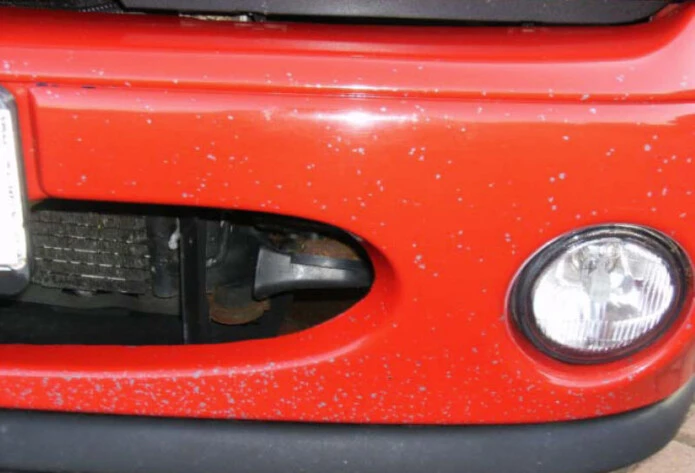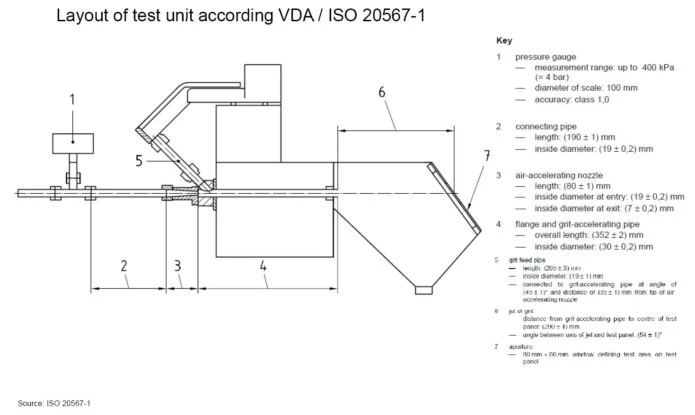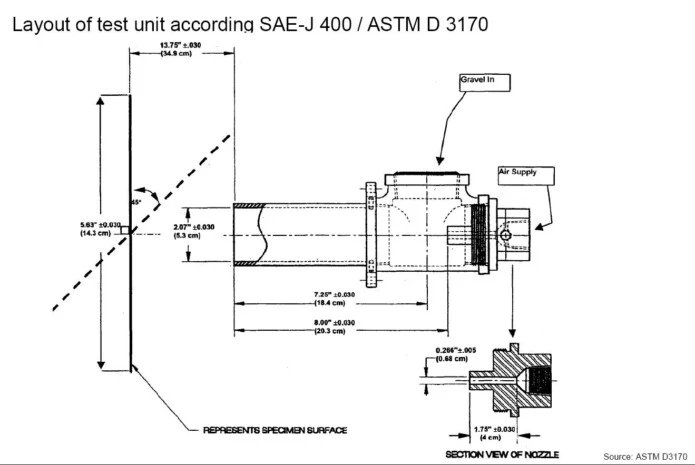Impact Test
Coatings & Industry > Mechanical properties > Flexibility and toughness > Stone Hammer Blow Tester
The purpose of Stone Impact Test
According ISO:
“In the automotive Industry, multi-layer paint coatings are applied to car bodies for protection. Grit, road-metal and other materials can damage these coatings in such a way that individual layers come off or the whole coating delaminates from the substrate”
According to ASTM:
“The test method (Chipping resistance of Coatings) covers the determination of a resistance of coatings to chipping damage by stones
or other flying objects…”
In other words…
All car users do expect a certain resistance under normal usage against chipping of the coating or material used for car manufacturing.

The difference between “VDA” and “SAE” standard
The majority of different test procedures of Stone Impact Tests can be sorted into two main groups:
• Testing according “SAE”• Testing according “VDA” (Association of German Car Builder)
– The base of the SAE test method has been described in the standard “Test for Chip Resistance on Surface Coating” SAE J-400.
ASTM D3170/D3170M -14 is describing a very similar method.
– The details for the VDA test method are described in the ISO 20567-1
– Several global OEMs in the car industry develop individual requirements for Stone Impact Testing which are based on either of the above procedures and standards.



The application of stone impact test in automobile coating industry
• Most car manufacturers have focused their requirements for the stone hammer blow testing on one of the established methods (either SAE or VDA).
• Some car manufactures use follow the stone hammer blow testing according the established standards with no modifications.
• Some care manufacturers have developed individual variants of the SAE or VDA methods like:
– PSA: D24 1312– Daimler: DBL 5416– Ford: FLTM BI 157-06– Renault: D24 1702